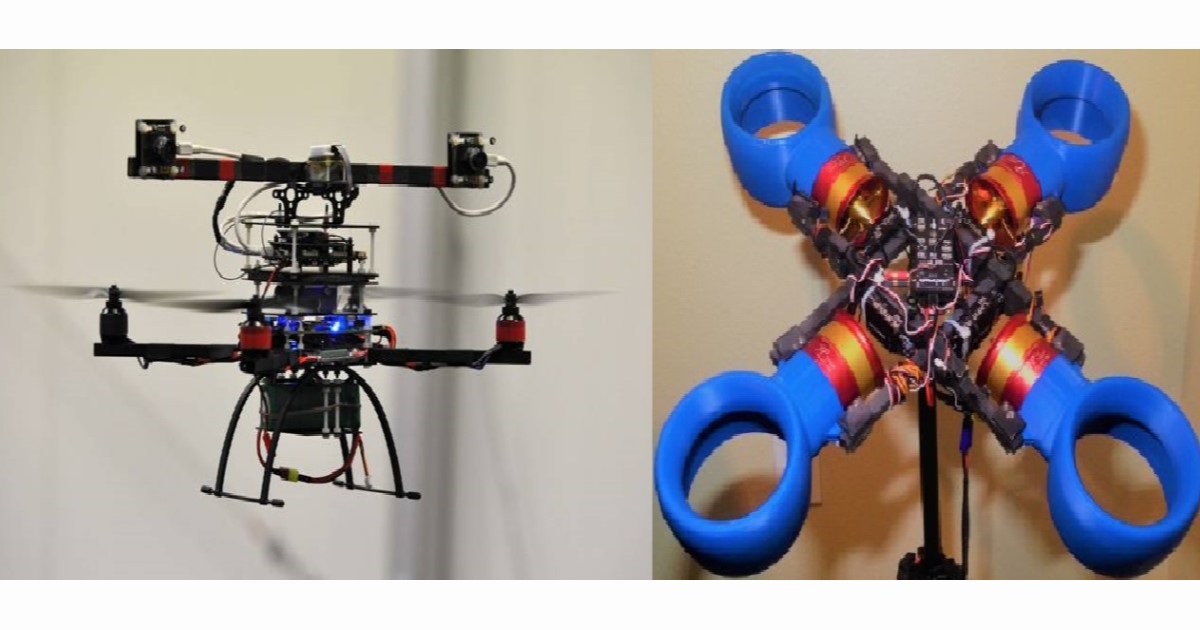- 2.5Impact Factor
- 5.5CiteScore
- 20 daysTime to First Decision
Aerial Robotics and Vehicles: Control and Mechanical Design
This special issue belongs to the section “Robotics and Automation“.
Special Issue Information
Dear Colleagues,
Aerial robotics has been an active area of research for several decades. The development of sophisticated auto-pilot systems for manned and unmanned vehicles, intelligent autonomous navigation systems, novel materials and microelectromechanical systems for biomimetic aerial robots and aerial manipulators have seen a large range of applications.
The advantages of modern embedded computing, accurate GPS positioning, low-cost sensors, and low-cost lightweight aerial vehicles have increased the number of applications in aerial robotics.
Aerial robotic vehicles have complex and sometimes partially known dynamic models. Moreover, the design and control of these systems may be challenging if the available sensors are inefficient.
Sophisticated control and estimation techniques commonly arise from prototype-specific requirements and constraints. For example, efficient control and estimation techniques should deal with the highly nonlinear dynamic model of vehicles. They should also ensure stability under the conditions of a dynamically changing environment. The literature shows that robust and nonlinear control and estimation algorithms can significantly improve the performance of aerial robotic systems.
Aerial robotics has diverse areas of development; for example, aerial manipulation is one of the main areas of opportunity in this field. It aims to combine the versatility and agility of some aerial platforms with the manipulation capabilities of a robotic manipulator arm. In addition, biological inspiration has also enriched the field of aerial robotics. Flight principles encountered in birds and insects have motivated the design and development of estimation and control strategies, as well as of sensing, actuation, and even motor driving mechanisms.
The main goal of this Special Issue is to collect recent results on aerial robotics, especially those that are concerned with practical and theoretical problems, efficient implementations in applications, as well as novel designs whose advantages can be proven by simulations.
The topics of this Special Issue cover a wide range of important applications in aerial robotics, such as:
- Modeling;
- Control design;
- Attitude estimation;
- Visual feedback;
- Real-time embedded system;
- Practical challenges in implementation;
- Aerial manipulation;
- Mechanical design;
- Bio-inspired aerial robot;
- Mathematical modeling;
- Simulation.
Prof. Dr. Javier Moreno-Valenzuela
Dr. Luis Rodolfo Garcia Carrillo
Prof. Dr. Alejandro Enrique Dzul López
Guest Editors
Manuscript Submission Information
Manuscripts should be submitted online at www.mdpi.com by registering and logging in to this website. Once you are registered, click here to go to the submission form. Manuscripts can be submitted until the deadline. All submissions that pass pre-check are peer-reviewed. Accepted papers will be published continuously in the journal (as soon as accepted) and will be listed together on the special issue website. Research articles, review articles as well as short communications are invited. For planned papers, a title and short abstract (about 250 words) can be sent to the Editorial Office for assessment.
Submitted manuscripts should not have been published previously, nor be under consideration for publication elsewhere (except conference proceedings papers). All manuscripts are thoroughly refereed through a single-blind peer-review process. A guide for authors and other relevant information for submission of manuscripts is available on the Instructions for Authors page. Applied Sciences is an international peer-reviewed open access semimonthly journal published by MDPI.
Please visit the Instructions for Authors page before submitting a manuscript. The Article Processing Charge (APC) for publication in this open access journal is 2400 CHF (Swiss Francs). Submitted papers should be well formatted and use good English. Authors may use MDPI's English editing service prior to publication or during author revisions.
Keywords
- modeling
- control design
- attitude estimation
- visual feedback
- real-time embedded system
- practical challenges in implementation
- aerial manipulation
- mechanical design
- bio-inspired aerial robot
- mathematical modeling
- simulation

Benefits of Publishing in a Special Issue
- Ease of navigation: Grouping papers by topic helps scholars navigate broad scope journals more efficiently.
- Greater discoverability: Special Issues support the reach and impact of scientific research. Articles in Special Issues are more discoverable and cited more frequently.
- Expansion of research network: Special Issues facilitate connections among authors, fostering scientific collaborations.
- External promotion: Articles in Special Issues are often promoted through the journal's social media, increasing their visibility.
- e-Book format: Special Issues with more than 10 articles can be published as dedicated e-books, ensuring wide and rapid dissemination.

